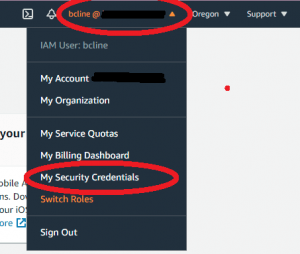Distributed architecture patterns are design principles that help organizations build scalable, flexible, and resilient systems. These patterns allow organizations to build systems that handle large amounts of data, traffic, and users without sacrificing performance or availability.
This blog post will explore how various Amazon Web Services (AWS) services are useful for implementing popular distributed architecture patterns.
The Microservices Pattern
The microservices pattern involves breaking down a monolithic application into smaller, independent units called microservices. Each microservice is responsible for a specific function. Each microservice can be developed, deployed, and scaled by itself.
AWS services that can be used to implement the microservices pattern include:
- Amazon ECS: A container orchestration service that makes it easy to deploy, run, and scale containerized applications.
- Amazon Fargate: A serverless compute engine for running containers. Fargate allows you to run your containers without the need to provision and manage servers.
- Amazon EKS: A managed Kubernetes service that makes it easy to deploy, manage, and scale containerized applications on Kubernetes.
The Event-Driven Pattern
The event-driven pattern involves building systems that are triggered by events. All communication is asynchronous through the exchange of messages. This pattern allows for decoupled between services and can improve the scalability and reliability of a system.
AWS services useful for implementing the event-driven pattern include:
- Amazon SNS: A fully managed pub/sub messaging service that makes it easy to send and receive messages between services.
- Amazon SQS: A fully managed message queue service that enables you to decouple and scale microservices, distributed systems, and serverless applications.
- AWS Lambda: A serverless compute service that allows you to run code in response to events and automatically manages the underlying compute resources.
The Stream Processing Pattern
The stream processing pattern involves processing large amounts of data as it is generated. Common use cases are real-time analytics, fraud detection, and event-driven architectures.
AWS services that can be used to implement the stream processing pattern include:
- Amazon Kinesis: A fully managed, real-time data streaming service that allows you to ingest, process, and analyze data in real time.
- Amazon Kinesis Data Streams: A scalable and durable data streaming service that can process millions of data records per second.
- Amazon Kinesis Data Firehose: A managed service for delivering real-time streaming data to destinations such as Amazon S3, Amazon Redshift, and Amazon Elasticsearch Service.
The Serverless Pattern
The serverless pattern involves building and running applications and services without server management. AWS looks after provisioning, scaling and maintenance.
Organizations only pay for consumed resources. Developers can focus on developing unique business logic.
AWS services useful for the serverless pattern include:
- AWS Lambda: A serverless computing service that allows you to run code in response to events. The run time environment manages the underlying compute resources.
- Amazon API Gateway: A managed service that makes it easy to create, publish, maintain, monitor, and secure APIs.
- Amazon DynamoDB: A managed, scalable, and fast NoSQL database service.
Wrapping it Up
AWS provides a wide range of services for implementing popular distributed architecture patterns.
Organizations can build scalable, flexible, and resilient systems by leveraging these services.




